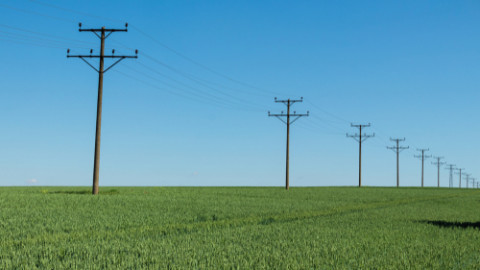A new project led by CSIRO will develop an easily deployed device to produce hydrogen directly at the point of consumption, in an Australian first.
The ground-breaking new technology could help reshape the nation’s energy landscape by safely generating hydrogen at off-grid locations, providing the hydrogen Australia needs to reach net zero emissions by 2050.
CSIRO scientists will build a demonstration unit based on patented technology to efficiently generate hydrogen from liquid carriers, supported by a $10 million investment over six years from research and innovation provider Advanced Carbon Engineering.
The use of a liquid carrier enables hydrogen to be safely and efficiently stored and transported in tanks from where it is produced – like a remote solar or wind farm – to where the energy is to be used.
CSIRO’s Deputy Hydrogen Industry Mission Lead, Dr Vicky Au, said the project will be the first unit using Australian technology to produce hydrogen from a liquid carrier, and addresses some of the key challenges to the growth of the hydrogen sector.
“Australia has the potential to become an energy superpower through hydrogen, but we need to find better methods of safely transporting and storing it at scale,” Dr Au said.
“To get the hydrogen industry moving, we need to be able to get hydrogen where it will be used by the consumer. This generator unit will do just that, and will be compact enough to move to where it’s needed – whether that’s a farm, a festival, an industrial facility or a mine site.
“The power of industry and research coming together cannot be overstated when delivering the solutions needed for a sustainable future.”
CSIRO Researcher Dr John Chiefari said CSIRO’s patented catalytic static mixers would be central to the development of the new hydrogen generator.
“Catalytic static mixers are special tools that mix fluids to speed up and better control chemical reactions without any moving parts. This level of control allows the process to be highly scalable without the technical challenges that this usually entails. This gives us a key advantage over the current packed bed reactor technology.” Dr Chiefari said.
“The technology to add hydrogen to a carrier fluid is already established. Now this hydrogen generation system will enable hydrogen to be produced locally and on demand from the carrier, with the added advantages of the carrier fluid being safely stored in a similar way to diesel or petrol.”
“This would be a big step forward with a goal to be able to store the fuel in standard tanks and manage it using existing diesel or petrol infrastructure.”
Advanced Carbon Engineering CEO, Jon McNaught, said that the company is building national capabilities by conducting critical research, facilitating innovative discoveries and building new industries.
“Innovation is vital for humanity’s future, driving progress and economic growth, solving challenges, creating opportunities, and ensuring a sustainable future for generations,” Mr McNaught said.
The project is being delivered as a part of CSIRO’s Hydrogen Industry Mission, which is dedicated to supporting global decarbonisation through the development of a commercially viable Australian hydrogen industry.
According to Australia’s National Hydrogen Strategy, a clean hydrogen industry will support 16,000 jobs by 2050, plus an additional 13,000 from the construction of related renewable energy infrastructure.
Australian hydrogen production for export and domestic use could generate more than $50 billion in additional GDP by 2050, and result in avoided greenhouse gas emissions equivalent to a third of Australia’s current fossil fuel emissions by 2050.
About the hydrogen technology
Adding hydrogen to a carrier fluid enables it to be stored and transported easily in liquid vessels, rather than as a gas in a pressure vessel. Typical liquid carriers include methyl cyclohexane (MCH) and perhydro-benzyl toluene (perhydro-BT). The technology to add hydrogen to a carrier fluid is already well established. Hydrogen reforming removes the hydrogen from the carrier fluid, so that the hydrogen can be used in a fuel cell to generate electricity, while the carrier fluid is returned and reused.
The research to use CSIRO’s patented catalytic static mixer technology for hydrogen reforming was made possible by CSIRO Kick-Start, an initiative that provides funding and support for innovative Australian start-ups and small businesses to access CSIRO’s research expertise and capabilities to help grow and develop their business.















